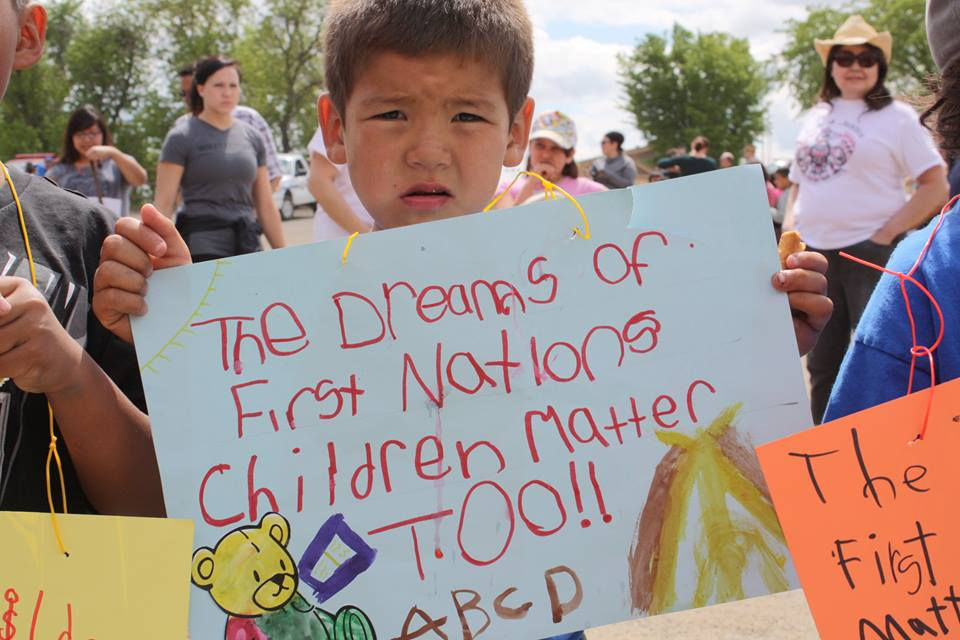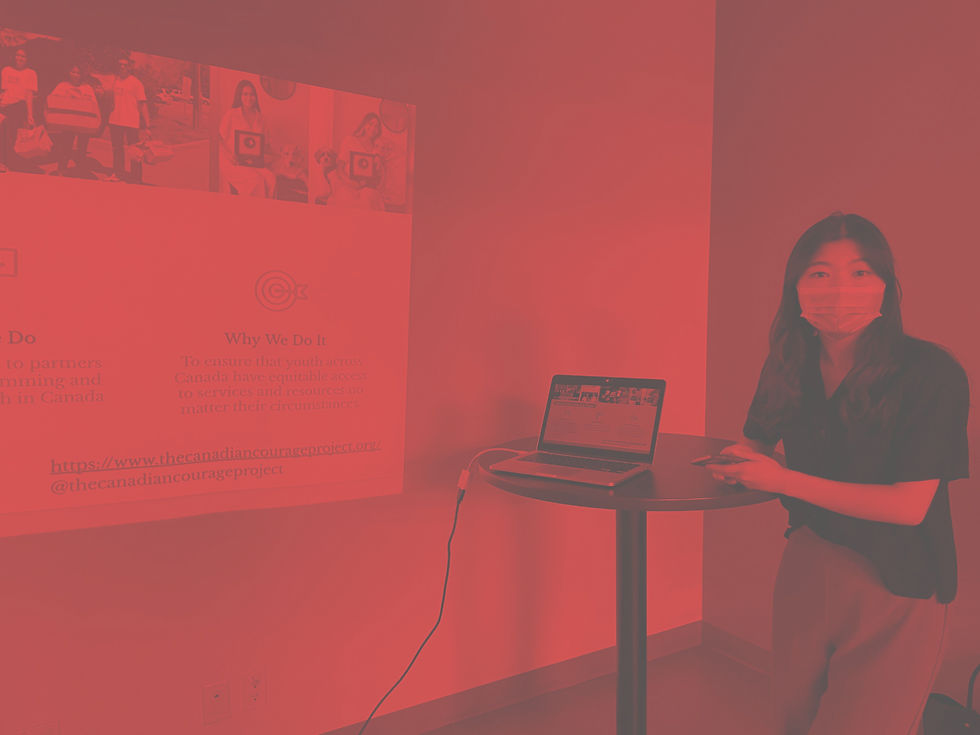Educational Barriers to Upward Financial Mobility
- Canadian Courage Project
- Dec 6, 2022
- 6 min read
Written by: Lauren Anderson
Edited by: Jacqueline Cheung
Dear CCP readers,
Today’s blog post continues a review of Naomi Thulien’s 2017 thesis paper on the lives of homeless youth and why youth experiencing homelessness have difficulty transitioning into independent adulthood. Our team aims to highlight Thulien’s incredible research study, as it reveals many truths regarding the reality of homelessness for youth in Canada. For her thesis, “Precarious Lives: A Critical Examination of Homeless Youth Transitions to Independent Housing,” Naomi Thulien conducted her own research study with nine study participants, ages 16-24, who were transitioning into independent housing. Today’s post will specifically focus on educational barriers experienced by youth facing homelessness in Canada.
In this blog post, we focus on how education serves as a barrier to necessary financial mobility for young adults experiencing homelessness. The Canadian Courage Project seeks to instill confidence in youth to set future educational and career goals that inspire them. We understand that there are significant barriers that they might face in reaching those goals, so it is important for our team to stay educated on this topic and share this awareness with the public.
If you would like to learn more information regarding the current state of homelessness in Canada and the Greater Toronto and Hamilton Area (GTHA), welcome! If you are returning for more information about the particular challenges faced by youth experiencing homelessness and those with animal companions, welcome back! If you are new to our blog, welcome to the community and thank you for your interest in learning more about issues regarding the homelessness crisis in Canada and beyond - you are one step closer to becoming a changemaker in your community, and you are in great company.

Barriers to Education
When we begin to understand the educational barriers that youth facing homelessness experience, we can then understand the life cycle of poverty and homelessness. Education is a human right that should offered free of cost to youth worldwide. According to the United Nations Educational, Scientific and Cultural Organization (UNESCO), education is meant to help provide equal opportunities, ensure sustainable development, and raise people from poverty, but there are still 244 million children around the globe that cannot access school education due to social, economic, and cultural reasons. Although education is a human right that is offered at no cost from elementary school until high school, there are many barriers to a quality education and education thereafter that cause critical issues for necessary mobility and development. The following are a few barriers to a quality education that are experienced in Canada:
A large wealth gap between the wealthy class (owning class) and the low-income class (traditional working class). This inequality significantly impacts the quality and quantity of educational resources available in their corresponding communities.
Food insecurity- a lack of proper nutrition and lack of consistent meals can hinder early childhood development.
Academic streaming models in the Canadian public school system that separates “good” students from “bad” students.
Access to consistent transportation to school.
Housing instability.
Sociocultural influences.
These are just a few barriers to adequate education that youth facing homelessness encounter and are areas we further discuss in this blog post.
A Pivotal Time: High School Education
In Naomi Thulien’s thesis, she explains how “academic streaming” has an effect on the outcome of a high school student's post-graduate prospects. Academic streaming is defined as grouping students based on ability to either an applied track or an academic track. Historically in Ontario, students must choose which track to join during before grade 9, but as of recently, has changed to grade 10. Thulien addresses the fact that students from low-income neighbourhoods are more likely to be enrolled in majority applied courses than academic courses in comparison to students from high-income neighbourhoods (Thulien). Students enrolled in applied courses are less likely to land job opportunities after high school and are prone to have significant economic barriers when pursuing post-secondary education (Thulien). It remains clear that there is a direct correlation with one’s socioeconomic status and their future outcomes over their life course. In Thulien’s research cohort, only six of the nine students graduated high school. The academic vs. applied streaming issue was a barrier that they faced, but there are also many educational barriers faced by youth who have not graduated from high school.
The majority of Canadian street-involved youth (62%) have not completed high school (Thulien). Within this group, the employment rate is only 36%, which is two times lower than the employment rate of those with a diploma (79%) (Thulien). There is an upward-tick in future success and career prospects for youth who have received an education, and their financial prosperity increases with each level of education they are able to access. Education is a strong determinant of future employment and income but remains a difficult hurdle for youth from disadvantaged backgrounds.
Financing Post-secondary Education
Youth who come from low-income households are less likely to pursue post-secondary education (trade schools, associate degree, Bachelor’s degree, Master’s degree, doctoral degrees, etc) for various reasons, but the main barrier to this level of education is financial concerns. Thulien shares the personal account of several of her study participants to demonstrate the impact of post-secondary education and various economic barriers experienced by the youth. In an interview with study participants Kat and John, Thulien learns how they value the prosperity that post-secondary education brings. She explains, “John, like most of the study participants, was streamlined in the 9th grade (15 years of age) into the applied stream, in a sense of marking him as incapable of succeeding alongside his university bound (academic stream) peers” (Thulien). Kat also felt that she would not be able to enjoy life, or let alone survive life, if she did not pursue post-secondary education. Thulien also explains her frustration by the economic barriers the study participants faced when pursuing post-secondary education, including the story of Marcel, a participant pursuing training to become a chef. Marcel was 24 years old and had received a school loan from the Ontario Student Assistance Program (OSAP) but was never able to return to school because he spent six years in jail (Thulien). Marcel faced many economic barriers after he served his jail term but maintained his interest in attending a culinary program. Thulien explains that the program required him to pay $150.00 to hold his spot in the program with only a week's notice but had to decide if sacrificing his monthly rent payment was worth pursuing his career goals. Fortunately, he was able to raise money to overcome this barrier, but Marcel’s story is just one of many that exemplifies the different types of economic barriers that low-income youth face.
The current system leaves various barriers for youth facing homelessness to access higher education, but economic barriers are of chief concern. We hope to provide awareness on these matters so that we can make change in our society to lead to easier access for youth to obtain quality education, a variety of career prospects, and eventually upward financial mobility to break the cycle of poverty.
Helpful Interventions
The CCP team also wants to highlight helpful interventions to improve education access to youth facing homelessness. We believe these interventions are helpful and hopefully can inspire both educational policy and organizational programming in the community.
People for Education reports success in from an investigation analyzing the benefit and success of combined applied and academic courses. People for Education recommended increased flexibility in educational structures and had previously recommended the Ontario school system to delay academic streaming until after grade 9 (which has recently passed). We agree with these recommendations.
There are various community programs that serve as interventional programming that may be beneficial to increasing student success in youth experiencing homelessness.
Yonge Street Mission is an organization that is dedicated to ending chronic poverty and provides a multitude of services for both street-involved youth and adults. This organization provides substantial educational and employment support including GED access, developing financial literacy skills, paid-job readiness programs, and innovative employment partnerships to help youth find stable employment in at least two years.

Our partner, YouthLink, offers a Pathways to Education Program for high school students in Scarborough Village that provides students with academic, social, and financial support.
Outside of direct programming measures to increase student success, it is clear that one’s socioeconomic status can have a massive impact on their ability to obtain quality education and their ability to finance higher education that can lead to more prosperity in our society. In order to combat this, it is important that we all increase the conversation on matters relating to the generational cycle of poverty and ask our leaders to drive change to close the wealth gap and increase resources for those from low-income backgrounds.
We at CCP are working to address issues which can have an impact on the health and wellbeing of youth and youth facing homelessness. Our goal is to inspire youth to believe their future goals are attainable, and also teach them how to reach those goals. Our team hosts career workshops to continue to inspire changemakers in their communities and we continue to advocate for equitable education across the country. If you would like to learn more about enhancing the education of youth facing homelessness, please also read our blog post about the importance of reading and literacy for youth. Click here for more!
Thank you for reading our blog! Feel free to leave a comment with your feedback and/or insights to help us enrich the quality of future posts and cater to the interests of our community of changemakers.
- The CCP Team
Shop Our Charitable Clothing Line
100% of proceeds go towards wellness programming for youth facing homelessness and their animal companions.
Sources
Admin. (2020, September 22). Inequality explained: The hidden gaps in Canada's education system. Open Canada. Retrieved December 6, 2022, from https://opencanada.org/inequality-explained-hidden-gaps-canadas-education-system/
Applied or academic - people for education. (n.d.). Retrieved December 6, 2022, from https://peopleforeducation.ca/wp-content/uploads/2017/07/Applied-or-Academic-Report-2015.pdf
by: Ontario Institute for Studies in Education, Sherman, by: A., Mare, by: L. L., & Campbell, by: V. (2018, July 11). Should we be streaming students? EdCan Network. Retrieved December 6, 2022, from https://www.edcan.ca/articles/the-facts-on-education-should-we-be-streaming-students/
CBC/Radio Canada. (2021, November 11). Ontario to end academic streaming for grade 9 students starting next school year | CBC News. CBCnews. Retrieved December 6, 2022, from https://www.cbc.ca/news/canada/toronto/ontario-schools-streaming-academic-applied-1.6245612
Our mission. Yonge Street Mission. (2022, May 24). Retrieved December 6, 2022, from https://www.ysm.ca/who-we-are/mission/
Scarborough Village Pathways to education. Youthlink. (2022, April 29). Retrieved December 6, 2022, from https://youthlink.ca/services/our-programs/education/scarborough-village-pathways-to-education/
Thulien, N. (2017). Precarious Lives: A Critical Examination of Homeless Youth Transitions to Independent Housing (thesis).
Unesco, & UNESCO Right to Education Initiative. (1970, January 1). The right to education. UNESCO.org. Retrieved December 6, 2022, from https://www.unesco.org/en/education/right-education




Comments